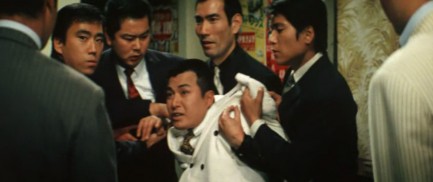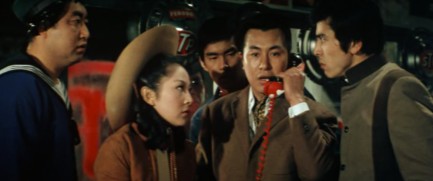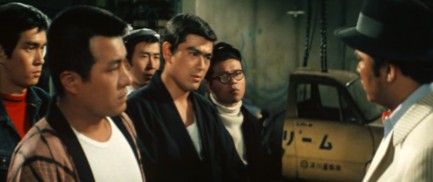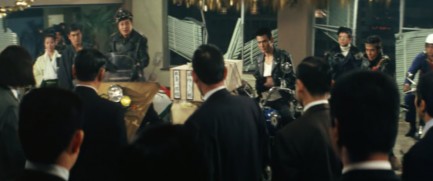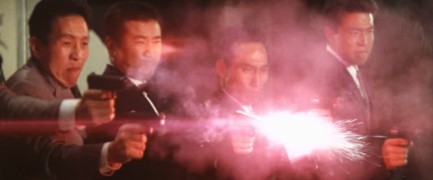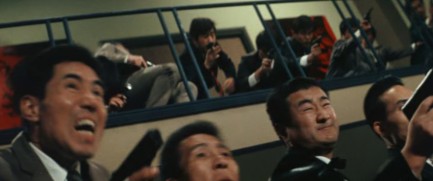| Vintage Pulp | Jan 18 2014 |

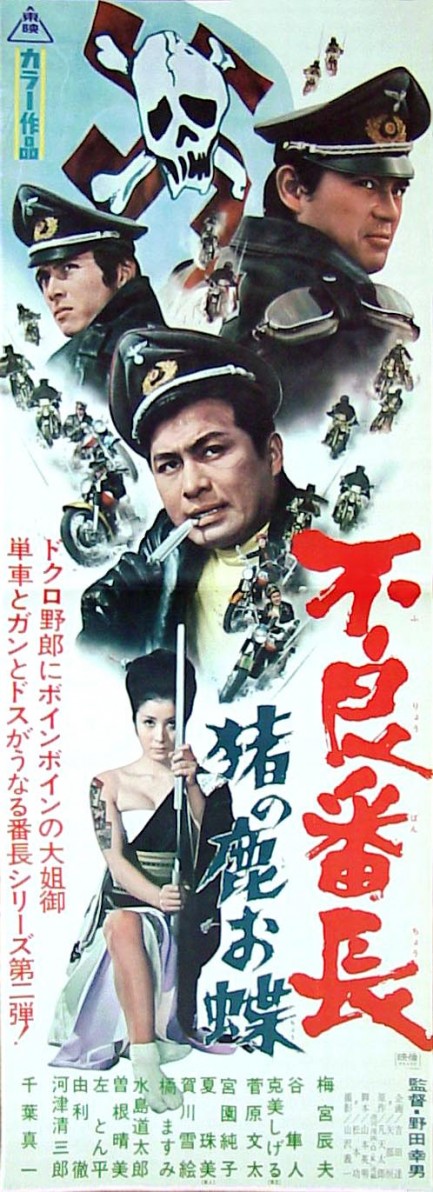
Furyô banchô: Inoshika Ochô, aka Wolves of the City, aka Wolves of the City: Ocho the She-Wolf was a significant hole in our Japanese actioner viewing résumé, but we solved that by watching the film a few days ago. In short, you get an amoral motorcycle gang in Nazi regalia pitted against evil Yakuza, with the tide eventually turning when the legendary hellion Ocho the She-Wolf teams up with the gang. The movie looks great. Yukio Noda’s direction—for the most part—is a marvel. He frames shots with six, seven, sometimes even a dozen interacting characters spread across the screen, yet it all seems effortless. Modern directors don’t seem remotely interested in using shots like these anymore, which is a shame, but it may also be a function of today’s screenwriters choosing to limit the number of characters who interact simultaneously. In any case, this is one thing we loved about the movie and we’ve shared some images of this technique below.
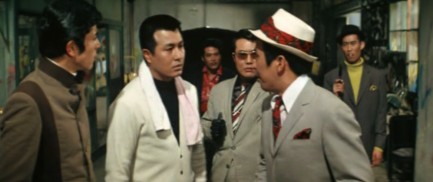
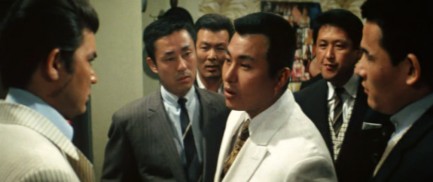
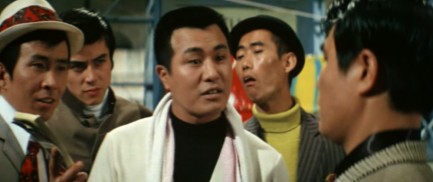
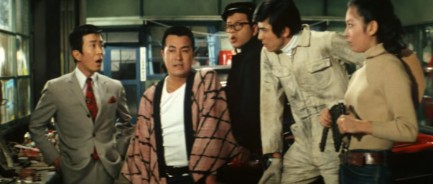

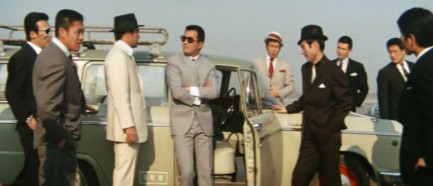
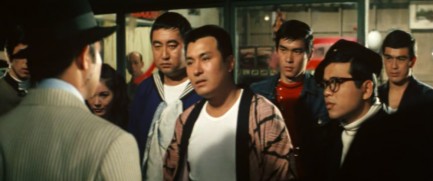 hitting their stage marks than making these confrontations look realistic. They reach their required positions in the scenes, but these hardened gangsters handle pistols and machine guns as if they were rubber snakes, dealing a major blow to what should be the visceral thrill of such moments. By packing the screen during the gunfights Noda forces the audience to accept that nobody can successfully shoot anyone from five feet away. It feels very bang-bang-you’re-dead amateurish, complete with wounded gangsters clutching their chests, spinning around, and falling to the floor.
hitting their stage marks than making these confrontations look realistic. They reach their required positions in the scenes, but these hardened gangsters handle pistols and machine guns as if they were rubber snakes, dealing a major blow to what should be the visceral thrill of such moments. By packing the screen during the gunfights Noda forces the audience to accept that nobody can successfully shoot anyone from five feet away. It feels very bang-bang-you’re-dead amateurish, complete with wounded gangsters clutching their chests, spinning around, and falling to the floor.